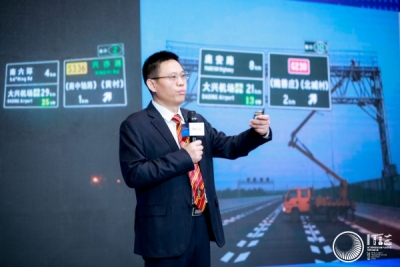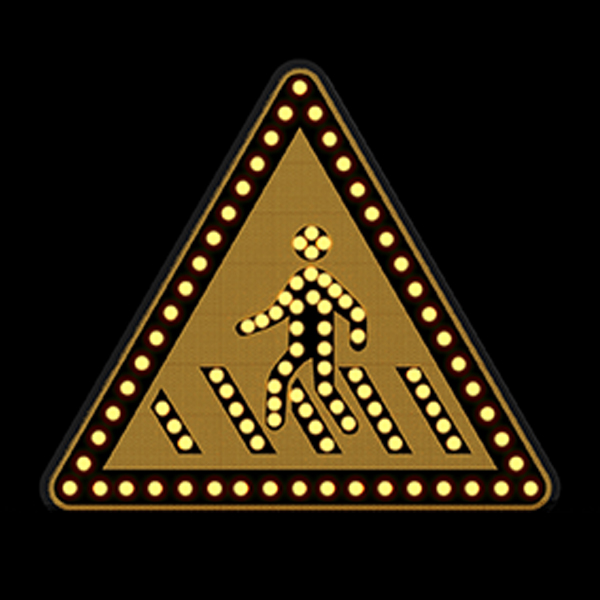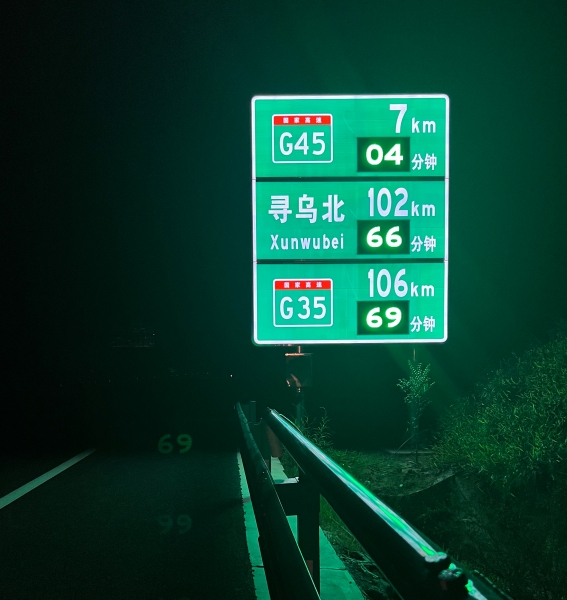News
Exclusive Depth: Active illuminated Sign Technology and Quality

The author, Gan Liu, founder of I-ROAD Technology Company, visiting scholar at Harvard University, the father of active illuminated traffic signs, a fanatic for traffic safety, has published a total of four professional works including "Research and Application of Active Luminous Traffic Signs."
In recent years, active illuminated signs have played a significant role in road traffic safety engineering, with increasing demand and market penetration rates year by year, sparking more interest from traffic safety facility manufacturers. Because active illuminated signs are still considered part of traffic signs, they must strictly adhere to the technical requirements of mandatory national standards while also raising standards in terms of quality stability and reliability to truly fulfill their functional role. This article focuses on the different technological processes and quality aspects of active illuminated signs.
The first essential requirement, as an identity of traffic signs, is to use reflective film materials to make the panel of active illuminated signs, and these must correspond to the reflective film category specified in the relevant national standards for different grades of road use. Unless the designers and managers of road traffic signs fully consider the uniqueness of the application scenarios and allow for the use of variable information signs or active illuminated signs with variable information content using LED pixel displays (without reflective film), the reflective film panel of active illuminated signs is an essential element to ensure basic visibility function under occasional power failure and all-weather conditions. Therefore, signs that emit light without reflective film materials cannot be called active illuminated signs.

The second aspect is the "dot matrix" active illuminated sign, where the different optical performance can lead to significant visual differences. LEDs are embedded on the surface of the sign, connected in a continuous line of multiple points, forming characters or graphic outlines, known as "dot matrix." Due to the limiting factors of the wavelength, color temperature, and angle of LEDs of different colors, to achieve high-definition visibility for drivers of fast-moving vehicles in road environments from maximum recognition distance to 0 meters, technical processing of the LEDs exposed on the sign surface is required. Manufacturers typically focus on developing Fresnel lenses, invented by French physicist Augustin-Jean Fresnel, for this purpose. These lenses are crucial for maintaining high visibility and readability. Professional manufacturers place great importance on the Fresnel lens process, considering factors such as hardness, transparency, weather resistance, and functionality for LED replacement and self-cleaning. Additionally, the adaptability of the circuitry, current, and voltage for dot matrix luminous signs is a key factor for high quality and extended lifespan. With the ongoing improvement of Surface Mount Technology (SMT), the traditional "LED line series" is expected to be completely replaced by a new type of "reflective patch LED light source board," significantly increasing the qualification rate of dot matrix luminous signs while achieving long life and stable reliability willwithout failures.

The third aspect is the "semi-transparent" active illuminated sign, where a significant brightness contrast between the background, text, and graphics can display highly prominent and important information content, widely used in directional signs. The manufacturing process of "semi-transparent" active illuminated signs is extremely complex, mainly involving two methods: one is to carve the text and graphics on metal plates, creating a hollowed-out "engraving," then filling the hollowed-out parts with transparent panels and applying reflective film; the other method uses large transparent panels, with non-translucent parts treated with "light-blocking," followed by applying reflective film. The hollowing and filling process for metal plates has extremely high requirements for the hardness, flatness, and firmness of the filling material. There are also strict requirements for the treatment of gaps between the filling material and the edge of the metal plate; otherwise, problems may arise with the quality of the reflective film. In the light-blocking process for transparent panels, not only the hardness, strength, elongation rate, and deformation resistance of large-scale panels need to be considered, but also the various physical properties of the light-blocking material need to be matched with the transparent panel and reflective film to avoid multiple minor issues leading to major failures. The brightness and visual performance superiority of "semi-transparent" active illuminated signs also depend on technical indicators such as light mixing, cold light, light intensity, and waterproofing of the LED light source board. Fully covering the translucent part with an LED light source board is the best solution, rather than relying on shortcuts like the so-called "side-mounted LED light strips."

The fourth aspect is the "fully transparent" active illuminated sign, where both the background and the text/graphic elements emit light, placing more demanding requirements on the brightness contrast between different information contents. In addition to the necessary and similar technical indicators as the "semi-transparent" signs, overcoming issues such as light attenuation, shadows, chromaticity, and brightness contrast becomes a focus of research and development. When drivers of fast-moving vehicles view "fully transparent" active illuminated signs from different distances and angles under varying environmental illuminance, differences in visual effects can easily be seen. This requires careful consideration of the correlation and integration of various factors within the sign itself. Based on strict experiments and analysis data, the selection and type of materials for the LED light source board, the box connection structure, the transparent panel, and the reflective film processing all affect their mutual compatibility. Commonly used transparent panels in industries such as architecture, greenhouses, and indoor environments have not been found to be suitable for use in luminous signs. Processes such as "digital printing" and "electroplating" for reflective films commonly reduce brightness contrast and aging performance. Despite the extremely demanding and difficult technical conditions, "fully transparent" active luminous signs are evidently considered relatively perfect products. They can exhibit almost consistent and vivid colors during daytime, nighttime, and in low visibility environments, making them ideal for future trends in traffic sign adoption.
The "dot matrix" type has almost no special technical requirements for reflective film materials, while the "semi-transparent" and "fully transparent" types require the LED point light source to emit light through the reflective film at close range (usually ≤3cm). This necessitates specific requirements for the reflective film's crystal structure, light transmittance, retroreflectivity, and color display performance. It is no longer feasible to directly use commonly available reflective films in the market; instead, they must meet the corresponding national standard technical specifications for reflective film categories. Additionally, technologies such as "luminescent films, cold light sheets, steel plate coatings for illumination, light guide panels, and advertising light boxes" that have been available in the market for years have been proven through experiments and applications to be unsuitable for use in traffic sign technology.
Furthermore, as an outdoor, large-scale, multi-extreme environment, high-speed visual requirement, stable, reliable, and long-lasting product, active illuminated signs are almost second only to vehicles in terms of being a multidisciplinary, highly integrated, high-difficulty, high-tech product. Apart from the details of the aforementioned technical processes, performance indicators such as electrical, waterproofing, communication, and chemical properties require specialized research and development to create "fault-free, ultra-long-life" products that are more "economical and practical" compared to traditional reflective signs. The road ahead is challenging, but compared to the significant needs for life, property safety in traffic fields such as roads, railways, waterways, and the matching application of new types of vehicles, as well as the breakthroughs and leadership in emerging industrial technologies, the goal, though distant, is achievable.





